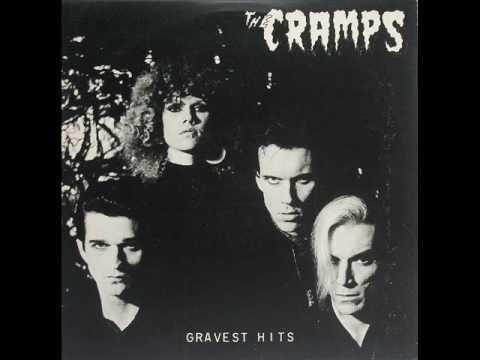If you are new to the world of guitars and in the market for one, you may wonder if a classical or acoustic guitar is better. After all, both are technically considered to be acoustic, right? Well, yes, both are acoustic (and some acoustic-electric models can be plugged into amplifiers), but that is where the similarities end and the differences begin.
This article will look at the differences between classical and acoustic guitars, so you can decide which will be best for your guitar-playing needs. Let’s get started.
Classical or Acoustic: Which Should You Choose?
Let’s start off by saying that it isn’t necessarily which type of guitar is better; the better question is which is best for your particular needs.
After all, not all guitars are meant to be used for all playing styles. So, for instance, you wouldn’t try to play heavy metal on a classical guitar any more than you would want to play a classical piece on an electric guitar (although this can sound pretty cool when done the right way).
Both guitars do not need to be amplified due to the sound holes creating plenty of resonance. Of course, there are electric versions of both classical and regular acoustic guitars, but if you are just starting, you probably won’t need one of these for the time being. Other similarities include both have six strings and are tuned the same way. This is the end of the similarities, though.
The question you need to ask is, “what type of music do I want to play?” For instance, if you love classical music, your best option is a classical guitar. On the other hand, if you want to play folk, country, or rock and roll, a steel-string acoustic guitar is the better option.
Acoustic and Classical Guitars: The Differences
Now we will look at the differences between acoustic and classical guitars. While they may look much the same, you may be surprised to learn how many differences there are.
Strings
First, classical and acoustic guitars use two different types of strings. Nylon strings are used for classical guitars; they are easier to press on and make playing this type of guitar much easier.
Steel strings are used for acoustic guitars. They are more difficult to press down on, so they are more challenging to play. Be sure to never put nylon strings on an acoustic guitar, and vice versa. The steel strings are too strong for the classical guitar, which has no truss rod in the neck (more on this later).
The method of stringing on each guitar is different as well. Nylon strings are attached to the bridge on a classical guitar, while steel strings are attached to bridge pins, made from wood or plastic. Bridge pins are pushed into place, securing the strings.
Fretboards
Now, let’s take a look at the fretboards of acoustic and classical guitars. On a classical guitar, the fretboard is much wider and flatter than an acoustic guitar. The spaces between the frets are also larger, and there is more space between each string. This can make it difficult for some people to play a classical guitar, especially if they have small hands.
But, it doesn’t mean that it can’t be done. No matter how small your hands are, if you want to play a classical guitar, by all means, play one to the best of your ability.
On the other hand, people with large hands and fingers find it easier for them to play a classical guitar. In fact, many people create their own unique sound by playing contemporary hits on a classical guitar. It may not sound like the original, but it still sounds pretty cool.
Headstocks
You may have noticed that the headstocks on classical and acoustic guitars are different from one another. On an acoustic guitar, the machine heads (tuning pegs) are much easier to use, especially when it comes time to tune your guitar. On the other hand, a classical guitar headstock has slots in it, and you have to run the strings through these slots, making it much more difficult to tune.
Body Sizes
Classical guitars usually have smaller bodies than acoustic guitars. This is why it is often recommended that people learn on a classical guitar. It is easier to hold, especially for smaller people, such as kids. On the other hand, because the body of an acoustic guitar is larger, it has a much fuller and deeper sound quality.
Bracing
Because an acoustic guitar has steel strings, it needs to have a more solid bracing to remain sturdy and provide adequate string tension. Believe it or not, this can also help to give the guitar a much better sound, as there is more projection and resonance. But, having the additional bracing also makes the guitar much heavier.
Since classical guitars have less bracing, it stands to reason that they are much lighter than acoustic guitars. They also don’t need as much string tension because of the soft nylon strings.

Neck Joints
The neck joints are different on classical and acoustic guitars. The neck and body join just behind the 14th fret on an acoustic guitar. On a classical guitar, this joint is located behind the 12th fret.
You will find some older acoustic models that also are joined at the 12th fret, but this is not the case with newer models. It is, however, always the case with classical guitars.
Truss Rods
A truss rod is a long steel rod that goes through the entire length of the neck of an acoustic guitar. There are also truss rods on electric guitars because they also require steel strings.
The truss rod is needed to ensure that the neck will not warp from the string tension. However, a truss rod isn’t needed since there is less string tension on a classical guitar with nylon strings.
Sound Quality
There are many arguments about the difference in sound quality between acoustic and classical guitars. Some say that the sound will be fuller because the steel strings play louder, albeit a bit on the treble side.
They also say nylon strings on a classical guitar help create a much quieter, duller sound. Others say that the classical guitar has a much deeper and fuller sound.
Acoustic or Classical: Which is Best for Beginners?
The answer to this question will vary from guitar player to guitar player. Many say that the classical is best because of the wider neck and softer strings.
But, the wide neck may be difficult for small hands, at least initially. Others say that if you start with nylon strings, it is more difficult to get used to using an acoustic guitar with harder steel strings.
Another problem is that you will be learning how to play one type of guitar. When you try to switch to the other type, it will take a bit of getting used to. Many people recommend using both types of guitars interchangeably, especially while learning to play.
Conclusion
As you can see, there are several differences between classical and acoustic guitars. Both are created to play different styles of music, but in the end, your choice of a classical or an acoustic guitar will come down to the type of music you want to play.




















